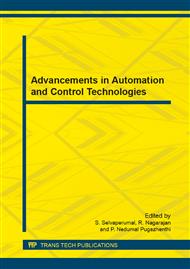p.529
p.537
p.543
p.549
p.556
p.560
p.565
p.571
p.576
Dynamic Load Rebalancing Algorithm for Private Cloud
Abstract:
Infrastructure-As-A-Service (IAAS) provides an environmental setup under any type of cloud. In Distributed file system (DFS), nodes are simultaneously serve computing and storage functions; that is parallel Data Processing and storage in cloud. Here, file is considered as a data or load. That file is partitioned into a number of File chunks (FC) allocated in distinct nodes so that Map Reduce tasks can be performed in parallel over the nodes. Files and Nodes can be dynamically created, deleted, and added. This results in load imbalance in a distributed file system; that is, the file chunks are not distributed as uniformly as possible among the Chunk Servers (CS). Emerging distributed file systems in production systems strongly depend on a central node for chunk reallocation or Distributed node to maintain global knowledge of all chunks. This dependence is clearly inadequate in a large-scale, failure-prone environment because the central load balancer is put under considerable workload that is linearly scaled with the system size, it may thus become the performance bottleneck and the single point of failure and memory wastage in distributed nodes. So, we have to enhance the Client side module with server side module to create, delete and update the file chunks in Client Module. And manage the overall private cloud and apply dynamic load balancing algorithm to perform auto scaling options in private cloud. In this project, a fully distributed load rebalancing algorithm is presented to cope with the load imbalance problem.
Info:
Periodical:
Pages:
556-559
Citation:
Online since:
June 2014
Authors:
Price:
Сopyright:
© 2014 Trans Tech Publications Ltd. All Rights Reserved
Share:
Citation:


